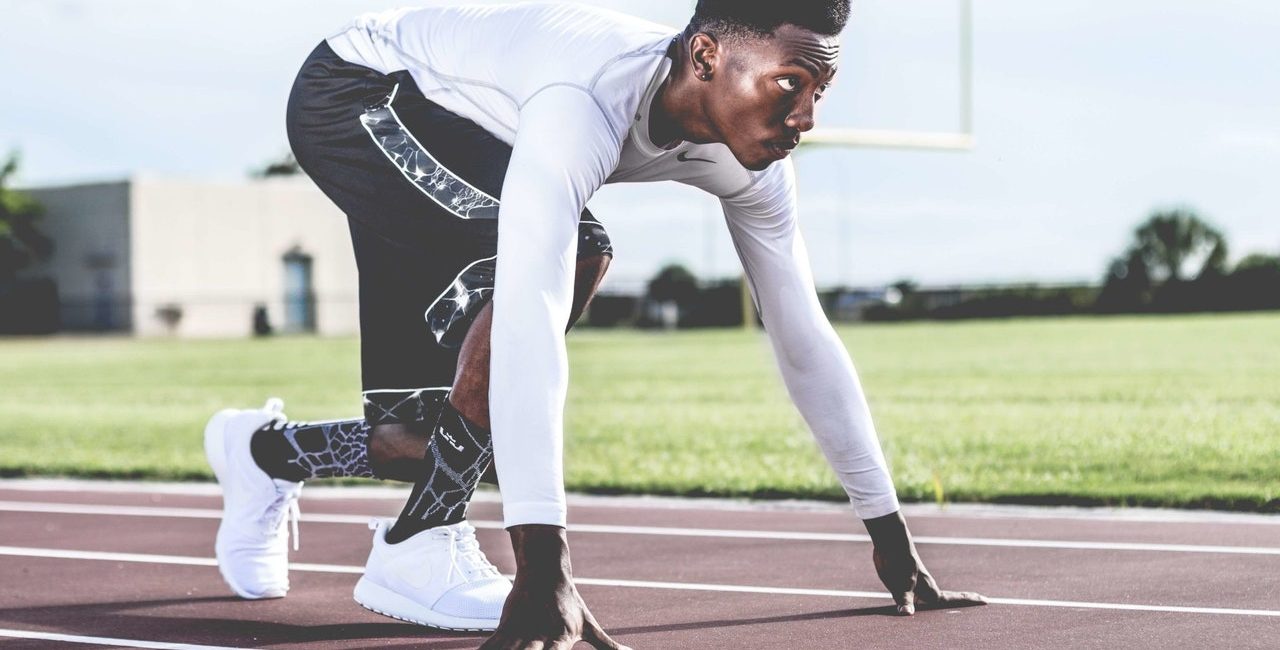Running is an accessible sport because of the lack of additional equipment needed. Primarily, you need yourself and that’s about it.
There are some pieces of equipment that are important to runners, however. Some aren’t necessary, like fitness trackers, but some are critical to success – like your running shoes.
Here, we cover why running shoes are the one piece of equipment you really need for running and how to choose the right pair.
The importance of good running shoes
If you’ve ever run any distance in non-running shoes – whether that’s running for a bus in your smart work shoes or a casual run in the park in high tops – you’ll probably know that it’s no good. While your everyday shoes are fine for walking and general day-to-day activity, they can’t provide your feet or your body with adequate support when running.
If you have a pair of everyday trainers that you use for running, in the long term, you’ll start to identify a number of issues. You might find that your feet and knees are especially sore and running in these shoes causes pain to shoot up your legs.
Running shoes are designed to absorb the impact of your foot hitting the floor when running – estimated to be 2.5 times your body weight. That’s a lot of weight to put on your feet and knees without adequate support.
Without proper running shoes, you can encounter many issues. A common complaint is blackened or even lost toenails due to a poor-fitting shoe. Runners not using the proper equipment are also at a higher risk of plantar fasciitis, a common but painful condition that causes stabbing pains in your heels.
How can I choose the right pair of running shoes?
There are a number of factors you need to take into consideration when searching for the perfect pair of running shoes.
What terrain are you running on?
Are you a road-runner, or do you prefer to run in fields and more scenic terrains? Different surfaces require different running shoes. Most standard running shoes will suffice if you’re running on pavements and roads, but you’ll require a specialist shoe if you’re running on softer, less even terrain.
Trail shoes, which are designed for off-road running, have a deeper tread and stronger grip, making them ideal for spongier surfaces. Looking for shoes with durable rubber outsoles also means you’ll be able to tackle icy, muddy, and wet conditions.
What type of running are you doing?
If you’re a regular marathon runner or you’re training for your first marathon, you’ll need a running shoe that is cushioned for optimal comfort. Long distances will have an impact on your feet – there’s no getting away from that, but opting for a cushioned shoe will significantly lessen this blow. If you run for general fitness with no marathon participation or goals, you can afford to go for a lighter, flexible shoe.
What’s your running gait style?
In simple terms, your running gait is how you run – but it’s a touch more complex than that. It’s how your legs and feet move. Your posture and the way you walk affects this, and it covers how your foot hits the ground as you run – known as pronation.
There are three types of running gait, all centred around your pronation. Neutral or normal pronation means your foot only rolls inward by 15 per cent, making full contact with the ground. Underpronation means you hit the ground with your outer heel first, rolling your foot inward 15 per cent or less, while overpronation means your inward roll is more than 15 per cent.
Nowadays, many running shoes take gait into consideration. Stability shoes, some of which can include medial posts, offer additional support for those with overpronation. Your pronation is often linked to your arch, which can be normal, high, or flat, so keeping this in mind is important.
Have you had any injuries in the past?
Some of us are simply more injury-prone than others. Naturally, the less running experience you have, the more likely you are to get injured. But those of us who’ve had serious injuries in the past may see them recur.
If you’ve fallen victim to plantar fasciitis in the past, there’s a chance it could come back. For some, it can turn into a chronic condition. Similarly, shin splints are often a minor injury that pose no serious risks initially, but if they occur frequently, they could cause permanent injury.
Shoes that offer additional cushioning can help prevent shin splints because they absorb the impact of your foot slamming into the floor, while shoes designed for your gait type will also provide the support you need.
Running is a great exercise for people looking to dip their toes into fitness or those who are looking to complement in-gym training with outdoor runs. Alongside the heart health and cardiovascular benefits of the exercise, it requires less equipment than other forms of exercise. Whether or not you go for a fitness tracker or moisture-wicking clothes, the one item you can’t skimp on is a good pair of running shoes tailored to your needs.
Sources
https://www.runandbecome.com/running-product-advice/best-running-shoes-shin-splints
https://orthopedicassociates.org/shin-splints-what-you-need-to-know/
https://www.shape.com/fitness/tips/how-determine-running-gait-why-it-matters
https://www.healthline.com/health/fitness/running-gait
https://www.livestrong.com/article/350355-what-are-the-benefits-of-running-shoes/





